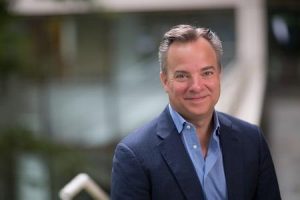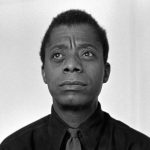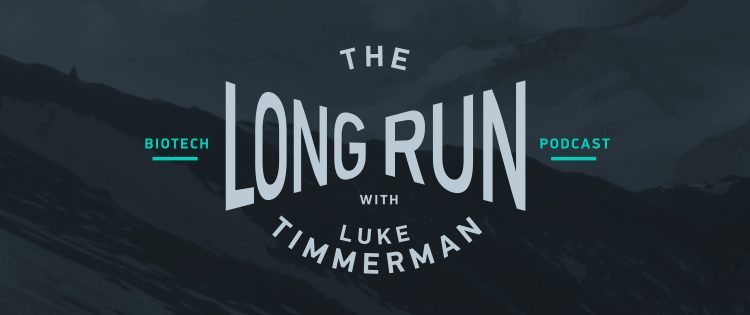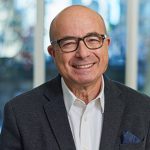Get In-depth Biotech Coverage with Timmerman Report.
6
Aug
2020
COVID-19 Is Driving a Shift in How We Value Diagnostic Tests

Bonnie H. Anderson, chairman and CEO, Veracyte
There are very few things many of us can say with 100 percent certainty. But after three decades of experience in molecular diagnostics and the life science industry, I can say this: never before has the healthcare profession, and even the American public, been so laser-focused on diagnostics.
For all the tragedy it has caused, the COVID-19 pandemic has shone a much-needed spotlight on the value of medical diagnostics. It has forced important discussions about how we think about and deploy these tools.
Challenges in running enough tests to quickly and accurately diagnose everyone infected with COVID-19 in the United States – in order to properly treat those in need and gather the information necessary to slow the spread of infection – have forced our country to take a crash course in diagnostic tests.
Everyone from the United States’ leading infectious disease experts and our country’s most influential healthcare reporters to a broad swath of the general public are intensely engaged in COVID-19 tests, weighing accuracy against turnaround time, sensitivity against specificity, or the appropriate time to use a molecular test to spot an active infection versus an antibody test to determine whether an individual was previously exposed to SARS-CoV-2.
Beyond the education factor, COVID-19 has revealed the broader utility of these tests. Diagnostics have become the gatekeeper to getting the economy back on track, sending children back to school and allowing American citizens to travel into other countries.
COVID-19 has also – finally – forced our hand in terms of making testing more accessible. Diagnostic testing is no longer limited to clinical centers. Instead, people are getting creative, expanding test access in order to meet a previously unfathomable demand for tens of millions of tests. Around the country, we’ve seen the dramatic expansion of mobile testing centers, pop-up testing locations, and point-of-care testing. Employers are testing their workforce — a move that’s been largely lauded by both groups as a means of getting people back to work safely and responsibly.
In some of these settings, a doctor’s prescription isn’t always necessary to get these tests. The surge in demand forces us to ask ourselves basic questions, such as when a prescribing healthcare professional is necessary to maintain safe and effective healthcare decision-making and when having to see one creates an unnecessary bottleneck in the system. In this case, the RT-PCR tests marketed by reputable companies and performed by well-equipped academic and private industry labs are so simple and reliable that it makes more sense in the long term to open the floodgates for consumers to directly order up tests themselves, have sample collection kits shipped straight to their homes, and then ship their samples back to a lab for analysis.
As diagnostics have become a central character in the pandemic story, public and private funding has poured in for the development of new tests.
Valuations for companies designing and manufacturing diagnostic tests have soared. New tests are cheered by reporters on the national news. The success we’ve seen has come from a massive, concerted effort by diagnostic developers, healthcare providers, regulatory agencies, and insurance companies.
As a veteran of the diagnostics industry, I am pleased to see that these tests are finally getting their due.
But it also makes me wonder why it took a global pandemic to get us here. And when COVID-19 is finally conquered, will the interest in diagnostics fade along with it?
Funds started flowing freely to diagnostic development when it became clear these tests would be necessary to get the economy back up and running at full capacity. Unfortunately, we have never seen this response when just as many lives were at stake, but the economy was functioning as usual.
Consider lung cancer, an area that I have focused on for more than a decade. The American Cancer Society estimates that more than 228,000 people will be diagnosed with lung cancer and nearly 136,000 people will die from it in the U.S. this year. The vast majority of funding dedicated to lung cancer goes toward research efforts focused on developing new therapeutics. But diagnostic tools that could detect lung cancer at much earlier stages and significantly improve patients’ chances of survival might offer more benefit and take a lot less funding to bring to market.
The most common objection I hear about introducing new diagnostic tests is that they will add to the already unsustainable costs of healthcare. This is a fundamental misunderstanding of diagnostics; good tests, developed carefully and targeted at specific health needs, will in fact reduce costs.
Today, just 2.3% of healthcare spending in the U.S. comes from in vitro diagnostics. Think about that for a second – it’s a statement about our traditional view of the value of diagnostics. This is the number one reason why we see so many therapeutics startups receive large sums of venture capital, while relatively little is directed toward diagnostics.
We pay a lot for drugs, not so much for diagnostics.
Looking a little further into the healthcare spending data, we can presume that advanced genomic tests from specialty laboratories – one of the most technologically promising aspects of the diagnostics industry — account for an even smaller slice of overall spending. If we doubled or even tripled that spending in order to detect health problems earlier — to start treatment of diseases when they are far less expensive to manage than they are in later stages — we would still be coming out ahead on overall expenditures. Testing is cheap compared to long-term illness, treatment, and death.
Placing a higher priority on the development and availability of advanced genomic tests for early disease detection would represent a major step in shifting our healthcare system’s focus from treatment to wellness. Diagnostics can help us catch diseases early, prevent the spread of illness, keep people healthy at work, and reduce all kinds of costs associated with undiagnosed disease and therapies. While those of us in the diagnostics community have known this all along, the COVID-19 pandemic has raised awareness of it for a much larger audience.
We need payers to buy into the value of early diagnosis through more sensitive and less invasive testing. This model can save lives and lower costs. Yet in the past, government agencies and insurance companies have often balked at covering such tests.
Consider the example of idiopathic pulmonary fibrosis (IPF), a serious and progressive lung disease. It takes the typical patient years to get diagnosed, often through multiple invasive, costly and potentially dangerous procedures. During that time, more than 20% of these patients will be given treatments that can actually harm them. My company has developed a clinically validated genomic test that can help end the diagnostic odyssey and get patients on the right treatment faster. This would improve health and reduce healthcare costs, and yet private payers have been very slow to cover it.
If we can conceive of pandemic-related diagnostic strategies to determine which people are safe to go to school, get on a plane, or return to work, then surely we can see the value in using diagnostic tests to tackle other leading causes of death.
We need to start waking up and realizing the benefits of early diagnosis of disease — the idea that we can test to stay well, instead of counting on therapies to make us well again.
Perhaps the new models of testing established for the pandemic will jump-start a different approach to diagnosis.
Could the new model of workplace testing be an avenue that opens up diagnostics beyond just COVID-19 testing? For example, does it open the door for broader screening and earlier detection of lung cancer? There are obvious issues with how much access employers have to their employees’ health information, and those will have to be managed carefully. But if employees come to trust their employers to deliver high-quality diagnostic tests — perhaps better tests than those they could access through typical healthcare channels — this could transform the valuation of and payment for important tests designed to keep people healthier and keep insurance premiums in check.
Self-insured employers could be the first to adopt this approach, and if it proves successful, other large employers might quickly follow suit. This is not enough, but it could be an interesting place to start.
COVID-19 has changed the way we are delivering healthcare and has — at least for the moment — dramatically increased the value we place on diagnostics and early detection. I truly believe if we can hold onto the lessons we are learning from this pandemic, there could be a brighter future for improving health and reducing healthcare costs through the use of diagnostic tests across a wide range of diseases and health conditions.
Bonnie H. Anderson is Chairman and Chief Executive Officer of Veracyte, a global genomic diagnostics company that improves patient care by providing answers to clinical questions that inform diagnosis and treatment decisions.
























